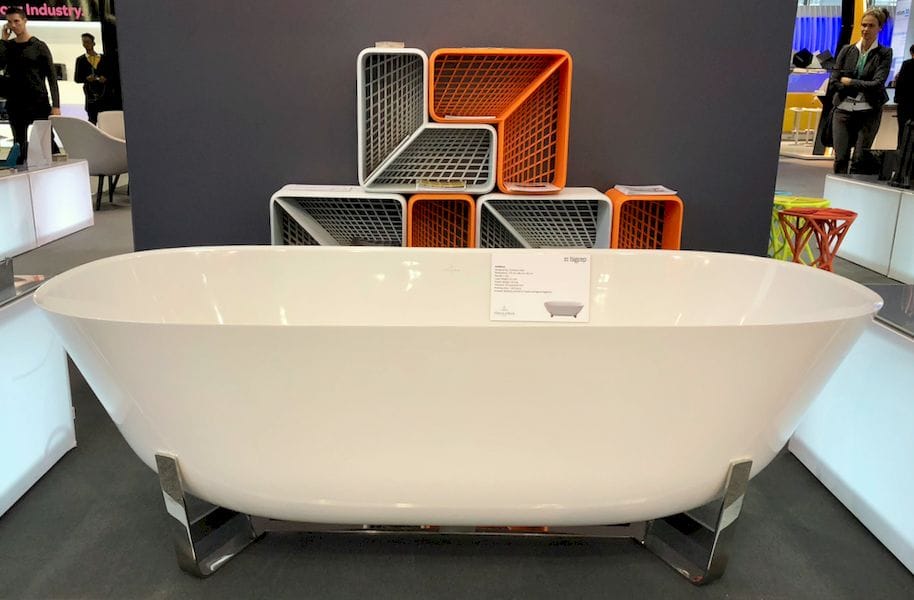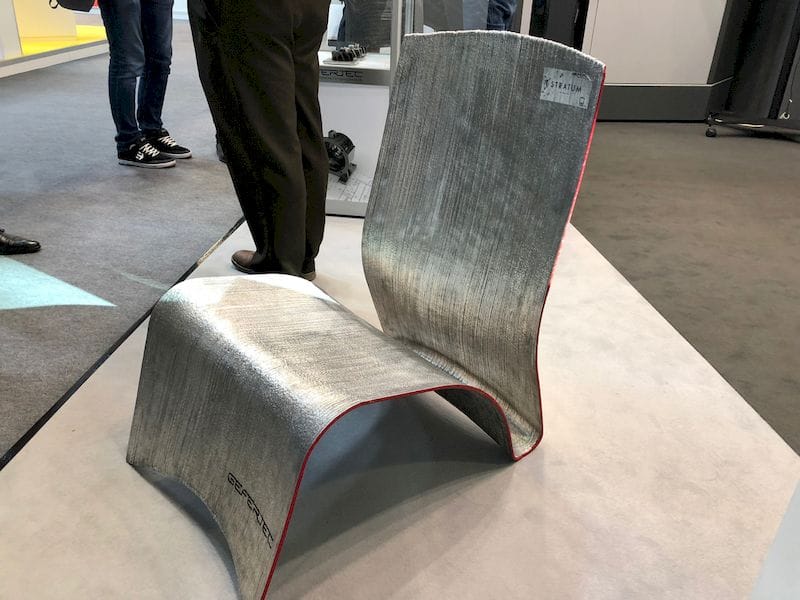
With the advent of large-scale 3D printers, one is tempted to 3D print furniture.
And that has happened repeatedly. We’ve seen multiple examples of 3D printed tables and chairs over the past few years, some even suitable to actually sit upon.
But just because your 3D printer’s build volume is large enough to accommodate the printing of furniture doesn’t mean you actually should do so.

For example, this 3D printed chair is made entirely of metal. It’s a fantastic example of a 3D print, but would you actually want to own this item in your home? It is a bit hard to sit on, is cold and sucks heat from your body, would be incredibly heavy to move and would no doubt leave deep grooves when dragged across the floor.
Other chairs made from thermoplastics might be better practical options, but few offer soft solutions.
Tables are more suitable for 3D printing, as they are typically rigid, matching the material profile for many large-format 3D printers.
But we saw a fascinating example where an item of furniture was not only suitable for 3D printing, but also profitable!
At top you can see what appears to be a conventional – and rather attractive – bathtub. This tub was 3D printed by one of BigRep’s clients, Villeroy & Boch, who used their equipment to 3D print four parts of the tub, which were then glued together and finished with a ceramic-like surface. The 175cm long tub was 3D printed in 16.4kg of PLA during a marathon 150 hour session.
But why print a relatively fragile bathtub? Made in PLA, it could potentially break, or catastrophically break. Don’t drop a wrench on it!
The reason for this tub is commercial. Villeroy & Boch obtained a classic tub design from Christian Hass, but were not sure if it would resonate with their clients. They were uncertain a large investment in tooling up to produce quantities of the tub design would be worthwhile.
Their plan was ingenious: quickly 3D print a tub REPLICA, and show it off at trade exhibitions. I didn’t realize there were trade shows for tubs, but who knew? Tub buyers would frequent the show, where their interest could be gauged.
If the tub met with interest, or even orders, Villeroy & Boch could be confident in going ahead with production of the tub design. In the past they might have attempted this scenario using hand-made replicas, but they would be less accurate and far more expensive to produce. Having access to a large-format 3D printer meant the cost of this prototype would have been just the finishing, as the cost of the plastic is negligible.
I’m wondering what other industries might be able to leverage large-format 3D printing for similar benefits. Know any?
Via BigRep

